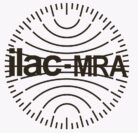
Asbestos – Definitely Not Dietary Fibre
If ingesting asbestos is potentially carcinogenic – and all of our old water pipes are made of asbestos cement resulting in high levels of asbestos in our drinking water – it is time to determine just what level of asbestos in drinking water is ‘safe’.
Everybody knows breathing asbestos is bad for you… linked to malignant mesothelioma and other lung cancers, asbestos has been completely banned for use or import in Australia since 2003, with significant discontinuation of use in building products starting in the early 80s.1 Widely used asbestos products included roof tiles, linoleum, fencing materials, window putty, rubber gaskets, paints, thermal insulation and more. Even after the widespread ban on all asbestos products was put in place, asbestos containing products are still present in existing buildings, asbestos cement water pipes, and imported products that should be asbestos free (eg. crayons, gaskets, paints etc).1,2
An interesting fact about mesothelioma that appears well known in the medical community but is glossed over in industrial and commercial settings is that mesothelioma can develop in the lungs (pleural mesothelioma) and in the gastrointestinal system (peritoneal mesothelioma) and both forms are primarily caused by asbestos exposure.3 Perhaps this connection has been largely overlooked due to the lesser risk of gastrointestinal cancers than lung cancers, with peritoneal mesothelioma accounting for less than 20% of asbestos related cancers and developing 20 to 50 years after exposure.4 Given the high incidence of asbestos related cancers, this 20% should be significant enough to take notice, even without the links to other gastrointestinal cancers.
The majority of the publicity surrounding asbestos focusses on the effect on the lungs, with recommendations about masks to prevent inhalation, stringent conditions for transport, and air monitoring to determine risk. To the casual observer it would appear that inhalation is the only hazard associated with asbestos, and current global and local guidelines reinforce this notion.
The Dept of Health, WA states5 that “While studies have clearly shown that asbestos poses a serious health risk when it is dry and inhaled, there is very little evidence to show that asbestos fibres will cause any harm when they are wet and swallowed. The effects of asbestos in the water supply have been studied extensively, and results have not shown an elevated risk of asbestos-related disease. In addition, although inhaled asbestos is a known carcinogen (cancer-causing substance), asbestos when swallowed is considered to pose very little, if any, carcinogenic risk to human health.” Additionally, the Dept of Health, WA mentions that the 2004 Australian Drinking Water Guidelines (2004 ADWG) and World Health Organisation have not set a guideline value for asbestos due to the absence of evidence that asbestos is hazardous to health.
The World Health Organisation (WHO) states6 in their 1996 documentation that “Although asbestos is a known human carcinogen by the inhalation route, available epidemiological studies do not support the hypothesis that an increased cancer risk is associated with the ingestion of asbestos in drinking-water.” They reinforce this in 2013, stating “There is therefore no consistent, convincing evidence that ingested asbestos is hazardous to health, and it is concluded that there is no need to establish a guideline for asbestos in drinking-water.”
The idea that ingestion of asbestos and asbestiform minerals could cause gastrointestinal cancer is not new – there are significant number of studies conducted through the late 1970s and early 1980s which investigate the possibility. Many of these studies conclude that due to small cohort sizes and the long delay between exposure and developing the disease, further study is required.7 Even with these limitations, some studies found a probable link between asbestos ingestion and gastrointestinal cancers, particularly stomach cancer, in both occupational8 and non-occupational10 settings. It was also raised that the comorbidity of smoking and asbestos inhalation obscured the significance of the link between asbestos ingestion and gastrointestinal cancers.
So, if ingesting asbestos is potentially carcinogenic, and all of our old water pipes and tanks are made of asbestos cement resulting in high levels of asbestos in our drinking water, is it time to determine just what level of asbestos in drinking water is ‘safe’?
Again, this isn’t a new concept. It was determined in 19719 that some beers contained low levels of asbestos. The asbestos was linked back to fibres released from the asbestos cement pipes used to transport the water, and it was shown that the fine fibres were able to pass through the filtration systems of both the water system and the brewery. Following on from this was the Duluth study10 between 1976 and 1981. After higher than expected levels of asbestos fibres were found in the drinking water of Duluth, Minnesota, USA, a study was started to monitor the incidence of cancers in the region compared with nearby regions over the same time period. The study noted an increase in cancer rates and a greater increase in cancer mortality between Duluth and the two comparative regions. In 1997, an epidemiological study of drinking water and cancer11 again suggested elevated levels of cancer in exposed populations and also noted that “As topics for epidemiologic evaluation, drinking water contaminants pose methodologic problems common to studies designed to detect relatively small elevations in risk, with the added challenge of assessing exposures for many years in the past.”
More recent studies have been more conclusive, although still there is significant need for further research. In 2005, a study of 726 lighthouse keepers in Norway was published12, showing the effect of asbestos in their drinking water on cancer of the gastrointestinal tract. The study was performed between 1960 and 2002 on lighthouse keepers first employed between 1917 and 1967. One of the first studies to more fully allow for the long delay in onset of asbestos related cancers, the study showed significantly elevated risk of stomach cancer among those exposed to asbestos in drinking water, and possible links to colon cancer.
In 2013 a literature review13 examined the published evidence so far linking asbestos to gastrointestinal cancer and summarised it in a useful table.13a Reviewing over 50 papers, the article shows the number of positive and negative links indicated in published works associated with types of gastrointestinal cancers and with the different types of asbestos. This article also notes dosages between < 1 million fibres per liter (MFL), cited as probably not harmful, to > 1 billion MFL, probably harmful, although doesn’t take into account water consumption.
This year, another review has been published14, calling for further studies and the possible establishment of monitoring plans. The expert commentary provided states “A risk threshold ([asbestos fibre] concentration in drinking water) for digestive cancers has not been convincingly identified so far and regulations, where adopted, have weak scientific basis and may not be adequate. With further and more definitive studies, evidence might become sufficient to justify monitoring plans, persuade countries with no current limits to set a maximum level of AFs in drinking water and might induce a revision of the existing legislations, pointing to efficient primary prevention policies.” The article links asbestos ingestion to gastric and colorectal cancer, toxic effects on the stomach, ileum and colon, histological alterations, and the ability to cross the placenta and enter foetal organs (including the liver) as well as act as a co-carcinogen agent.
Dosage effects have been inadequately studied, which makes developing guidelines very difficult. It is important that, instead of equating lack of evidence to lack of risk, we acknowledge the possibility of risk associated with ingesting asbestos and begin the journey of understanding and regulating asbestos in drinking water before many more people are subjected to the effects.
- Department of Health, 2013, When and where was asbestos used?. Available at: http://www.health.gov.au/internet/publications/publishing.nsf/Content/asbestos-toc~asbestos-when-and-where
- Border Force, Asbestos. Available at: http://www.border.gov.au/Busi/cargo-support-trade-and-goods/importing-goods/prohibited-and-restricted/asbestos
- Bofetta, P. (2006) Epidemiology of peritoneal mesothelioma: a review, Annals of Oncology 18: 985–990, Available at: http://citeseerx.ist.psu.edu/viewdoc/download?doi=10.1.1.521.9698&rep=rep1&type=pdf
- Conway, W. C. (2017), Peritoneal Mesothelioma, The Mesothelioma Center. Available at: https://www.asbestos.com/mesothelioma/peritoneal.php
- Department of Health (2016), Asbestos in drinking water. Available at: http://ww2.health.wa.gov.au/Articles/A_E/Asbestos-in-drinking-water
- WHO (1996), Asbestos in Drinking-water: Background document for development of
WHO Guidelines for Drinking-water Quality, World Health Organisation. Available at: http://www.who.int/water_sanitation_health/water-quality/guidelines/chemicals/asbestos.pdf?ua=1 - Morgan, R. W., Foliart, D. E., Wong, O. (1985), Asbestos and Gastrointestinal Cancer, West J Med. 143(1): 60–65. Available at: https://www.ncbi.nlm.nih.gov/pmc/articles/PMC1306225/
- Selikoff, I. J. (1974), Epidemiology of gastrointestinal cancer, Environ Health Perspect. 9: 299–305. Available at: https://www.ncbi.nlm.nih.gov/pmc/articles/PMC1475395/
- Cunningham, H. M., Pontefract, R. (1971), Asbestos Fibres in Beverages and Drinking Water, Nature 232, 332 – 333. Available at: http://www.nature.com/nature/journal/v232/n5309/abs/232332a0.html
- Sigurdson, E. E. et al (1981), Cancer morbidity investigations: Lessons from the Duluth study of possible effects of asbestos in drinking water, Environmental Research 25(1):50-61. Available at: (http://www.sciencedirect.com/science/article/pii/0013935181900797
- Kantor, K. P. (1997), Drinking water and cancer, Cancer Causes & Control 8(3):292–308. Available at: https://link.springer.com/article/10.1023/A:1018444902486
- Kjaerheim, K. et al (2005), Cancer of the gastrointestinal tract and exposure to asbestos in drinking water among lighthouse keepers (Norway), Cancer Causes & Control 16(5):593-8. Available at: https://www.ncbi.nlm.nih.gov/pubmed/15986115
- Kim, S. J. et al (2013), Asbestos-Induced Gastrointestinal Cancer: An Update, J Gastrointest Dig Syst. 3(3): 135. Available at: https://www.ncbi.nlm.nih.gov/pmc/articles/PMC4856305/
- Di Ciaula, A. (2017), Asbestos ingestion and gastrointestinal cancer: a possible underestimated hazard, Expert Review of Gastroenterology & Hepatology 11(5):419-425. Available here: http://www.tandfonline.com/doi/abs/10.1080/17474124.2017.1300528






